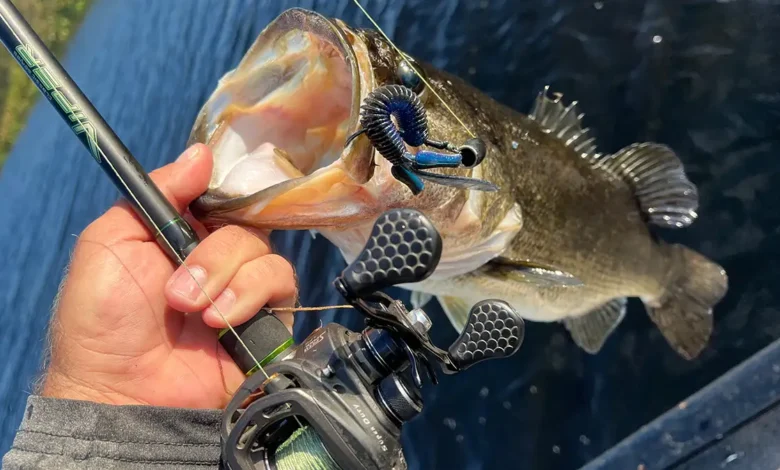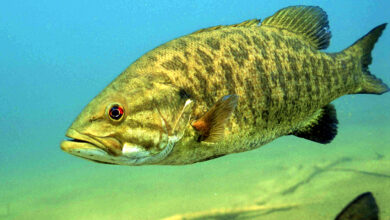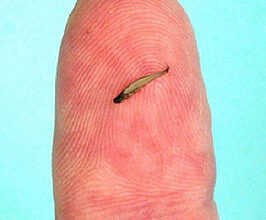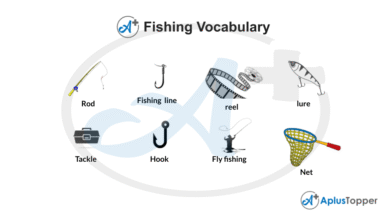What Is the Best Fishing Gear and How Do You Choose It?

Have you ever stood in the aisle of a tackle shop, staring at endless rows of rods, reels, lures, and accessories, and thought to yourself, what’s actually the best fishing gear for me? If so, you’re not alone. Fishing gear can feel overwhelming, especially for beginners. Even seasoned anglers sometimes struggle with deciding which rod or reel will give them the best advantage on the water.
The truth is, the “best” fishing gear depends on your style, your target species, and where you plan to fish. What works perfectly for bass fishing in a small lake may not suit saltwater anglers chasing redfish along the coast. This is why choosing the right gear is more about balance, comfort, and matching tools to the job than simply buying the most expensive items.
In this article, we’ll walk through every essential piece of fishing gear, explain why it matters, and highlight what makes certain gear stand out from the rest. By the end, you’ll not only know what to look for—you’ll feel confident about building the perfect setup for your fishing adventures.
The Rod: The Foundation of Every Setup
Fishing starts with the rod, and choosing the right one can make or break your experience.
Types of Fishing Rods
- Spinning Rods: Best for beginners, easy to use, and versatile enough for light to medium tackle.
- Casting Rods (Baitcasters): Great for accuracy, power, and heavier lures. Ideal for anglers who want more control.
- Fly Rods: Designed for fly fishing. Flexible, long, and meant for casting lightweight flies with precision.
- Telescopic Rods: Collapsible and travel-friendly. Perfect for anglers who like portability.
What Makes a Good Rod?
The best fishing rod balances sensitivity, strength, and comfort. You want a rod that lets you feel bites, yet has the backbone to handle bigger fish. Pay attention to length and power ratings. A 7-foot medium-heavy rod, for example, is versatile enough for bass, walleye, and even some inshore saltwater fishing.
The Reel: Power and Precision
A rod is only half the story. Pairing it with the right reel ensures smooth casting and reliable retrieval.
Spinning Reels
Spinning reels are incredibly popular because they’re easy to master. They’re perfect for casting light lures, finesse techniques, or fishing in windy conditions.
Baitcasting Reels
These reels are favored by experienced anglers for their accuracy and control. They handle heavy lines and lures better, making them a top choice for bass fishing and larger freshwater species.
Fly Reels
Specialized for fly fishing, these reels focus on line management and drag strength rather than casting distance.
What to Look for in a Reel
- Smooth drag system – Ensures the line doesn’t break during sudden runs.
- Gear ratio – Higher ratios retrieve line faster, while lower ratios give more torque for fighting strong fish.
- Durability – Saltwater reels need corrosion-resistant materials, while freshwater reels can prioritize lightweight designs.
Fishing Line: The Unsung Hero
Fishing line is often overlooked, but it plays a critical role. Using the wrong line can cost you a trophy catch.
Types of Fishing Line
- Monofilament: Stretchy, affordable, and beginner-friendly. Best for topwater lures and general use.
- Fluorocarbon: Nearly invisible underwater. Great for clear water and finesse fishing.
- Braided Line: Strong, thin, and highly sensitive. Excellent for heavy cover or when you need power and feel.
Matching Line to Situation
- Bass fishing in weeds? Use braid.
- Trout in crystal-clear streams? Fluorocarbon is your friend.
- Casual pond fishing? Monofilament will get the job done.
The best line isn’t just about strength—it’s about matching it to the fishing conditions.
Hooks and Terminal Tackle
It doesn’t matter how good your rod and reel are—without the right hooks, swivels, and weights, you won’t land many fish.
Hooks
Hooks come in different sizes and shapes, from circle hooks to wide gaps. The key is choosing a hook that matches your bait and the fish’s mouth size.
Weights
Sinkers help you control depth. Whether you’re fishing bottom rigs for catfish or dropping shot weights for bass, weights keep your bait in the strike zone.
Swivels and Snaps
These prevent line twist and make it easier to change lures quickly. Simple but invaluable pieces of gear.
Lures and Baits: The Fun Part
Ask ten anglers what the best lure is, and you’ll likely get ten different answers. That’s because lures and baits depend heavily on the species you’re targeting.
Artificial Lures
- Crankbaits: Imitate baitfish and dive at various depths.
- Soft Plastics: Worms, craws, and swimbaits. Great for versatility.
- Topwater Lures: Frogs, poppers, and buzzbaits create surface action.
- Spinnerbaits: Flashy and effective for covering water quickly.
Natural Baits
- Worms: Simple, effective, and affordable.
- Minnows: Perfect for predatory fish like bass, pike, and crappie.
- Cut Bait: Used for catfish and larger species.
The best anglers keep a mix of both natural and artificial options to adapt to changing conditions.
Tackle Box: Organizing Your Arsenal
Every angler needs a solid tackle box. It’s where you store hooks, lures, weights, and accessories.
What Makes a Great Tackle Box?
- Compartments: Keep gear organized and easy to find.
- Durability: Water-resistant models last longer.
- Portability: Backpacks or soft-sided tackle bags make moving around easier.
The best fishing gear isn’t just about what you carry, but how you carry it. A well-organized tackle box saves time and frustration.
Accessories That Make Life Easier
Sometimes, it’s the little things that make the biggest difference. A few accessories can transform a frustrating trip into a smooth one.
- Pliers: For removing hooks quickly.
- Fish Grippers: Safer handling of larger fish.
- Measuring Tape/Scale: Keeps track of your personal bests.
- Polarized Sunglasses: Reduces glare and lets you see fish below the surface.
- Landing Net: Helps land fish without breaking your line.
These accessories may not be flashy, but they’re part of the best fishing gear list for a reason.
Clothing and Comfort
Fishing often means spending hours outdoors. The right clothing keeps you comfortable and focused.
- Fishing Shirts: Lightweight, breathable, and protective against UV rays.
- Hats and Buffs: Shield your face and neck from the sun.
- Waterproof Boots: Essential for wading or wet conditions.
- Rain Gear: Keeps you dry during unexpected showers.
Comfort is underrated in fishing. The best gear won’t matter if you’re too hot, cold, or wet to enjoy yourself.
Technology and Modern Gear
Fishing has gone high-tech in recent years. Many anglers now include gadgets in their setups.
- Fish Finders: Use sonar to locate fish and structure.
- GPS Units: Help you mark productive spots and navigate unfamiliar waters.
- Electric Reels: For deep-sea fishing where heavy lifting is required.
While not essential, these tools enhance the experience and make you more efficient on the water.
Building the Perfect Setup
So, what’s the best way to put all this together? Think of your gear as a system. Your rod, reel, line, and lure should all complement each other.
For example:
- Bass Setup: Medium-heavy rod, baitcasting reel, braided line, soft plastic worm.
- Trout Setup: Light spinning rod, spinning reel, fluorocarbon line, small spinners.
- Saltwater Setup: Heavy rod, spinning reel, braided line, jig heads with soft plastics.
By tailoring your gear to your target fish, you maximize your chances of success.
Common Mistakes When Choosing Fishing Gear
Even experienced anglers sometimes make mistakes. Here are a few to avoid:
- Buying gear too heavy for your target species.
- Ignoring comfort. A rod might be powerful, but if it feels awkward, you won’t enjoy it.
- Forgetting about line. Too many people buy expensive reels and skimp on line quality.
- Not maintaining equipment. The best gear won’t last long without cleaning and care.
Avoiding these mistakes helps you get the most from your investment.
Why the Best Fishing Gear Is Different for Everyone
At the end of the day, the best fishing gear isn’t a universal list. It’s what works best for you. Your fishing style, your local waters, and your personal preferences all play a role.
For some, the best gear is a simple spinning rod with a worm and bobber. For others, it’s a high-end baitcasting combo paired with the latest lures. Both are valid. What matters most is that your gear helps you enjoy the experience and keeps you coming back to the water.
Final Thoughts: Finding Your Perfect Gear
So, what is the best fishing gear? It’s the gear that helps you fish confidently, comfortably, and effectively. From rods and reels to lures and accessories, the right tools make all the difference.
Fishing isn’t just about catching fish—it’s about the experience. The best gear enhances that experience, turning a simple hobby into a lifelong passion. Whether you’re just starting or upgrading your arsenal, investing in quality gear will always pay off in better memories on the water.
The next time you walk into that tackle shop and feel overwhelmed, remember this: choose gear that fits your style, feels comfortable in your hands, and matches the fish you’re after. That’s when you’ll know you’ve found the best fishing gear—for you.



